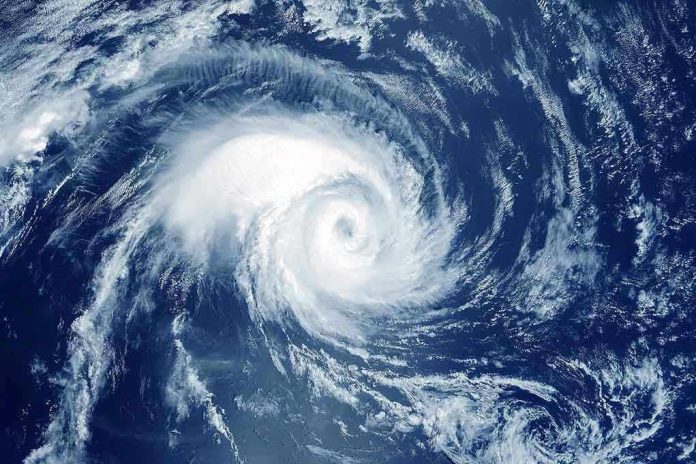
The Philippines faces its 21st storm of the year as Super Typhoon Fung-wong delivers a devastating blow that killed at least two people and forced one million citizens from their homes.
Story Snapshot
- Super Typhoon Fung-wong strikes Philippines as the nation’s 21st storm this year
- At least two fatalities confirmed with one million people evacuated from danger zones
- Torrential rains and fierce winds devastate communities across affected regions
- Philippines continues to bear the brunt of an exceptionally active typhoon season
Record-Breaking Storm Season Intensifies
Super Typhoon Fung-wong represents more than just another weather event for the Philippines—it marks the 21st named storm to impact the archipelago nation in a single year. This staggering number highlights the country’s position as one of the world’s most typhoon-prone regions. The sheer frequency of these storms creates a relentless cycle of preparation, impact, and recovery that tests the resilience of both infrastructure and communities.
The typhoon brought the destructive combination that makes these storms so dangerous: torrential rainfall capable of triggering deadly landslides and flooding, paired with fierce winds that can level structures and turn everyday objects into projectiles. Emergency response teams worked around the clock to coordinate evacuations before the storm’s arrival, demonstrating the critical importance of early warning systems.
Million-Person Evacuation Saves Lives
The massive evacuation of one million people represents one of the largest displacement operations the Philippines has undertaken this year. Local authorities, working with national emergency management agencies, moved residents from high-risk coastal areas and flood-prone regions to safer evacuation centers. This proactive approach, while disruptive to daily life, proves essential in minimizing casualties when facing storms of this magnitude.
The logistics of moving such a large population require extensive coordination between local governments, military units, and civilian organizations. Evacuation centers must accommodate families for extended periods, providing shelter, food, and basic medical care while communities weather the storm and begin initial recovery efforts.
Climate Reality Demands Preparedness
The Philippines’ geography places it directly in the path of Pacific typhoons, making these storms an unavoidable reality rather than an occasional threat. The country’s 7,640 islands create countless vulnerable coastal communities, while mountainous terrain can amplify rainfall effects and trigger landslides. Understanding this geographic vulnerability helps explain why the nation has developed some of the world’s most comprehensive typhoon preparedness protocols.
The death toll of at least two people, while tragic, reflects the effectiveness of early warning systems and evacuation procedures. Without these measures, storms of Fung-wong’s intensity typically produce far higher casualty numbers. The relatively low fatality count demonstrates how proper preparation and community cooperation can save lives even when facing nature’s most powerful forces.
Sources:
‘Like It Was the End of the World’: A Million Flee From Typhoon in the Philippines



